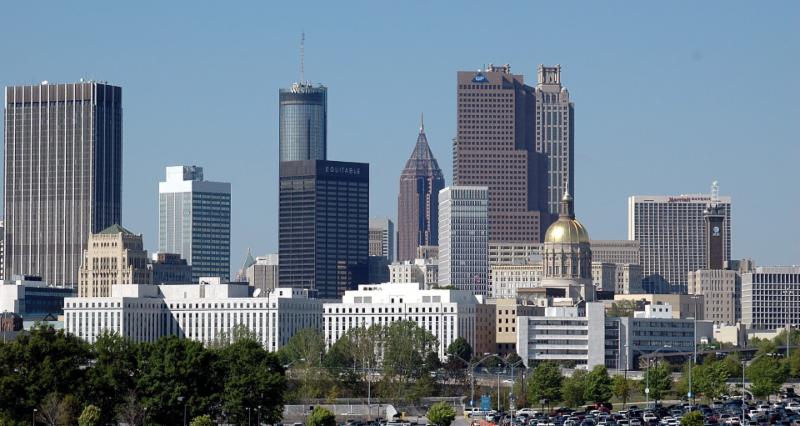Events of Interest
Nov. 11-13, 2016
Harrisburg, PA
Oct 13-16, 2016
Raleigh, NC
October 13th to 16th
Jan 10-14, 2017
Washington, D.C
Mar 17-21, 2017
Atlanta, GA
|
|
STPA Student Paper Competition Call
STPA invites undergraduate and graduate students who have written research papers related to transportation policy and administration to submit their papers for consideration. Deadline for receiving papers is February 8, 2017.
For more details
.
|
|
Job Openings
Colorado University, Denver
University of Cincinnati
City of Portland, OR
|
|
Nominations Sought for Truitt-Felbinger Award
The award was established in memory of Lawrence J. Truitt and Claire Felbinger, former STPA Chairs, valued colleagues, scholars, practitioners, and teachers and is presented annually to an individual who has made significant contributions to the field of transportation policy and administration. Some of the previous recipients were: Neilson A. "Dutch" Berthof, Aviation Director for the City of Phoenix; Former Deputy Secretary of Transportation, Mortimer L. Downey; James R. Mills, Chairman Emeritus of the San Diego Metropolitan Transportation Board; and, Scott Hercik, Appalachian Regional Commission, and Barbara Ivanov,
Director of the Washington State Department of Transportation (WSDOT) Freight Systems Division
Send your nominations to STPA Awards Committee Chair
chad.r.miller@usm.edu.
|
|
| |
|
Illinois Passes Legislation Allowing Transit TIF Districts
By STPA Member Andy Crosby, Ph.D., Assistant Professor at Pace University, New York, NY
In an age of scarce infrastructure funding, the State of Illinois has taken action to create a new revenue source for transit projects. On June 30, lawmakers in Illinois passed Senate Bill 2562 (SB 2562), which allows creation of Tax-Increment Financing (TIF) districts for public transportation. The "transit TIF district" legislation is expected to be used in part to finance well over $2 billion in costs for the rehabilitation and extension of major rail lines and facilities in the Chicago area. New TIFs will be allowed to capture property value increases within a half mile of designated portions of a total of 46 miles of the Chicago Transit Authority (CTA)'s Red, Purple and Blue lines, which are among the busiest rapid transit corridors in the Chicago region. Revenue from the TIFs can also be used to obtain federal matching funds for various transit projects.
Four major projects are outlined in the legislation. Two projects are aimed at rehabilitating decades-old sections of the CTA's Red, Purple, and Blue lines. A third project is intended to extend the Red Line further into the South Side of Chicago where no rapid transit service currently exists. Finally, revenue from transit TIFs can be used to fund the renovation of Chicago's historic Union Station rail terminal, which serves as the region's primary Amtrak station as well as a hub for Metra commuter rail.
Notably, the TIF districts are designed so that no money is diverted from K-12 schools. School districts will receive full funding that they would otherwise receive in the absence of the TIF district.
|

ASPA is Right Around The Corner!
Gerard Wellman, STPA Chairperson
Our Annual Meeting will be occurring in March 2017 at ASPA's Annual Conference, in Atlanta, Georgia! STPA is putting together a panel to showcase the wonderful research and scholarship being conducted within our section, and we'd like to invite you to consider presenting your transportation-related research with us.
If you'd like to be considered for the panel, please send an abstract of your proposed work no later than Friday, September 16, 2016 to
gwellman@csustan.edu
.
As always, please let me know if you have questions, and we look forward to seeing you in Atlanta!

|
Traveling the United States by Rail: The Need for Multimodal Transportation Networks
By STPA Member Josephine Hazelton, Graduate Student in Public Administration at California State University, Stanislaus
The National Railroad Passenger Corporation, or "Amtrak" has provided regional and long-distance passenger rail service across the country since 1971. Despite the contemporary car-centric society, Amtrak plays an important role in enabling mobility and connecting passengers to hundreds of cities. This summer I embarked on a trip through 18 states across the country, using Amtrak for long-distance travel and local transit systems for intracity trips. I was curious to learn the current challenges associated with long-distance train
travel
and more importantly, gain a better understanding of what public transportation administrators can do to improve multimodal transportation networks.
After stopping in various cities along my trip from Sacramento, California to Boston, Massachusetts, the importance of
multimodal connectivity quickly became apparent. In some cities, the train stations are
located on the periphery and not serviced by local transit. Additionally, some cities lack active transportation infrastructure on the streets surrounding the train station which make walking to a bus stop or the next destination exceptionally difficult. Other cities have a more cohesive transportation network with central
ized transportation locations that enable seamless transitions between Amtrak and local transit.
A successful multimodal transportation network is also supported by pedestrian-oriented infrastructure and transit stops with adequate signage. As a visitor utilizing unfamiliar transit systems, I relied heavily on cities having proper signage with information such as route maps and timetables. Inadequate signage can deter potential riders from choosing transit as it makes it difficult to know simply when or where the bus is going.
Traveling across the United States by Amtrak is a rewarding experience. The culture and environment of the train is a refreshing alternativ
 e from the encapsulated lifestyle brought about by the automobile-centered society. A robust national passenger rail system has many benefi
ts-both to the individual rider and society-but a successful system requires planning and policy decisions that focus on improving th
e accessibility and convenience of rail travel. When public transportation administrators understand how multimodal connectivity can work to satisfy some of the current challenges train riders face, it will, in turn provide an attractive and efficient passenger rail system for the future.
e from the encapsulated lifestyle brought about by the automobile-centered society. A robust national passenger rail system has many benefi
ts-both to the individual rider and society-but a successful system requires planning and policy decisions that focus on improving th
e accessibility and convenience of rail travel. When public transportation administrators understand how multimodal connectivity can work to satisfy some of the current challenges train riders face, it will, in turn provide an attractive and efficient passenger rail system for the future.
|
|
|
|
|